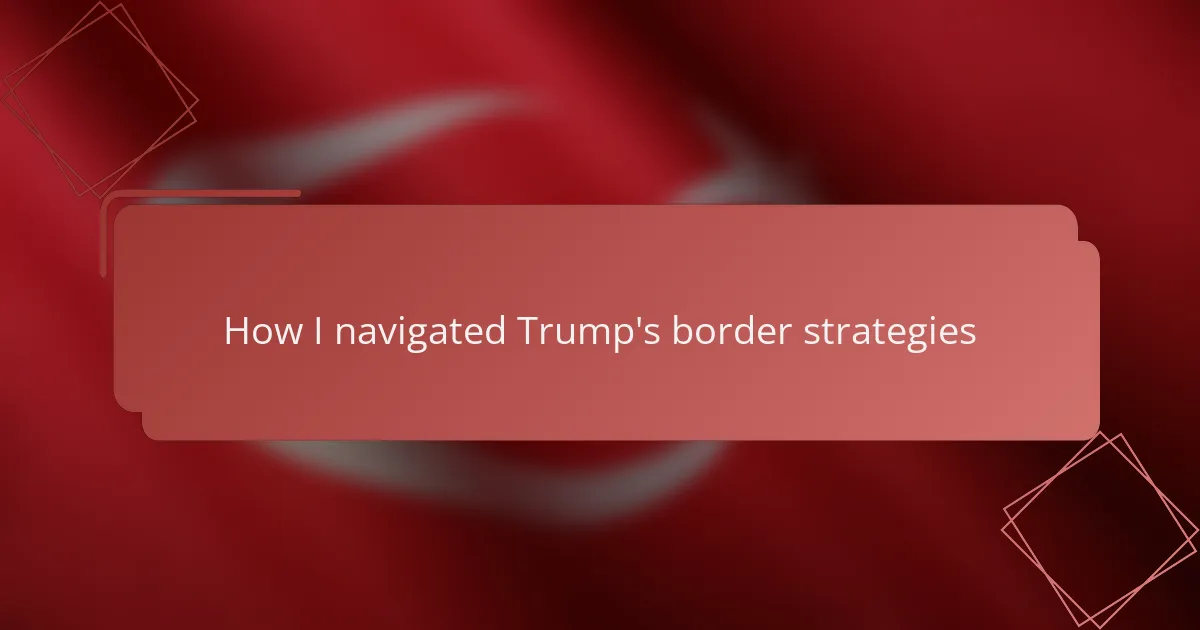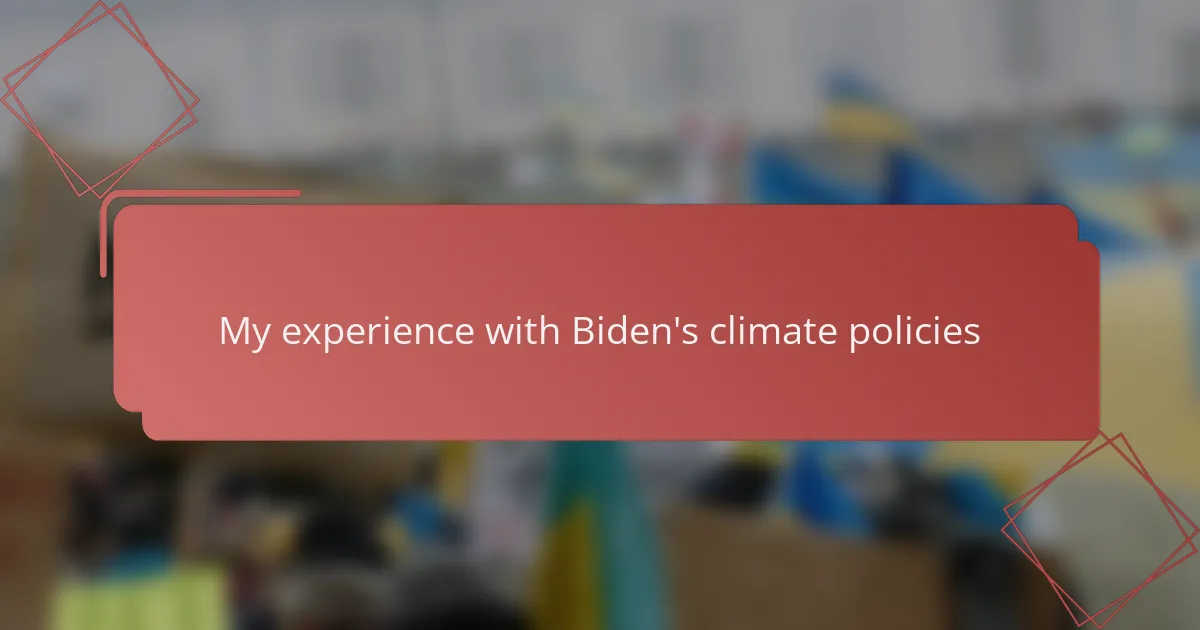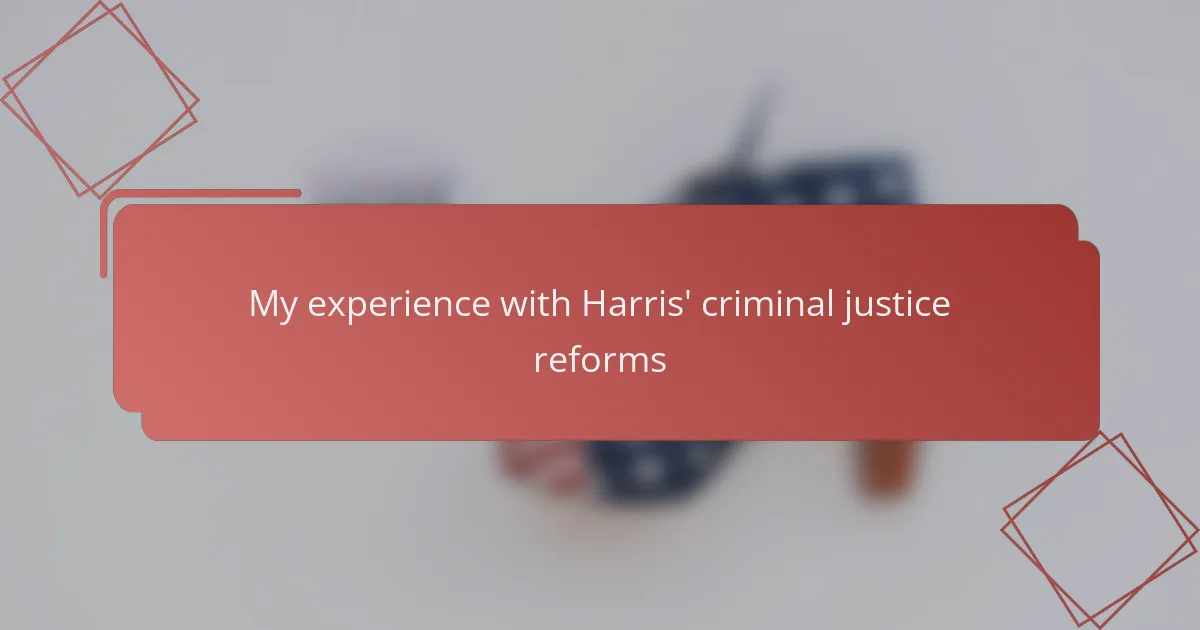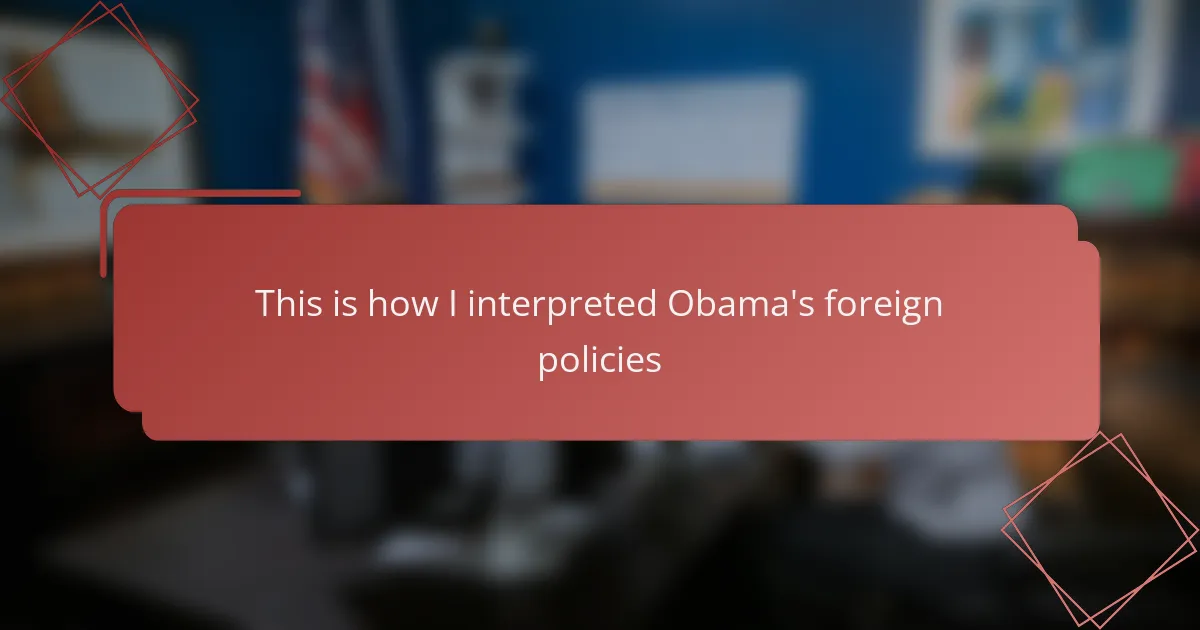Key takeaways
- Political satire serves to provoke thought and challenge perspectives on complex issues like immigration while utilizing humor.
- Exaggeration, irony, and metaphor are essential techniques in satirizing border policies, providing clarity through humor.
- The balance between humor and empathy is crucial in satire, as it invites reflection without alienating the audience.
- Continuous research and adaptability are necessary for effective satire to remain relevant and impactful in a fast-changing political landscape.
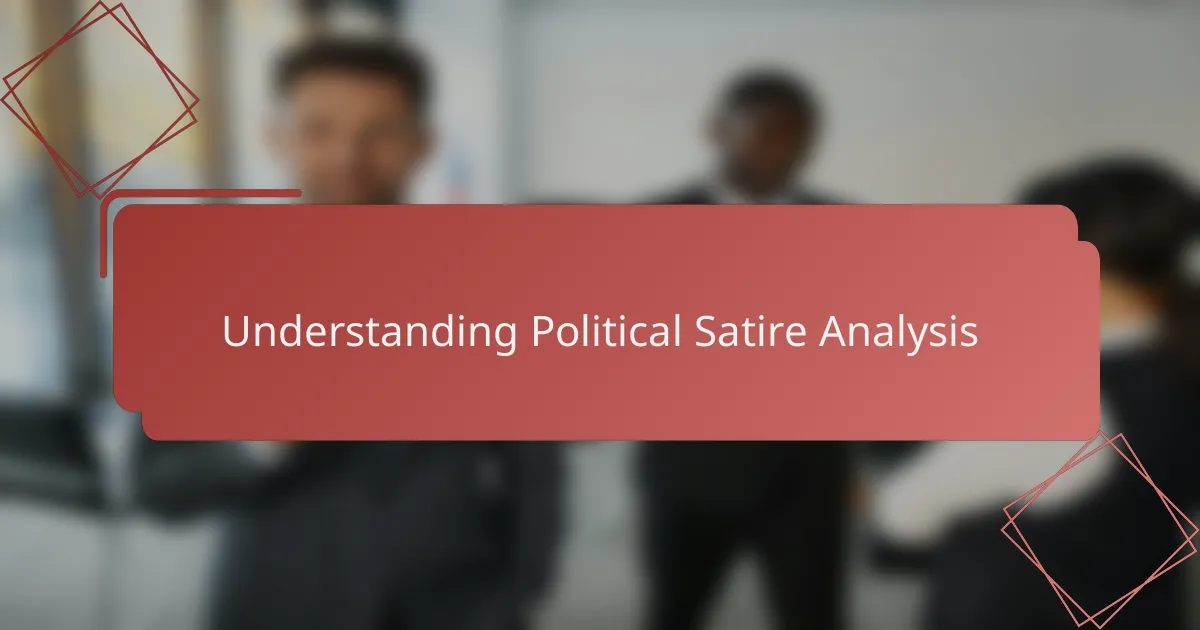
Understanding political satire analysis
Political satire analysis is all about peeling back the layers of humor to uncover deeper political truths. From my experience, it’s like deciphering a cleverly disguised message—often the jokes hit closer to reality than straightforward news. I remember catching a satirical sketch on Trump’s border policies that made me both laugh and reflect on the complex emotions tied to immigration debates.
What makes political satire particularly compelling is its ability to provoke thought through wit. It doesn’t just mock; it challenges us to reconsider our views, sometimes exposing uncomfortable realities with a wink. Here are some key aspects I focus on when analyzing political satire:
- The use of exaggeration to highlight the absurdity of policies
- Symbolism that represents broader political issues
- The emotional tone, whether it’s sarcasm, irony, or dark humor
- The satirist’s perspective—what biases or viewpoints are subtly conveyed
- How satire reflects or influences public opinion and political discourse
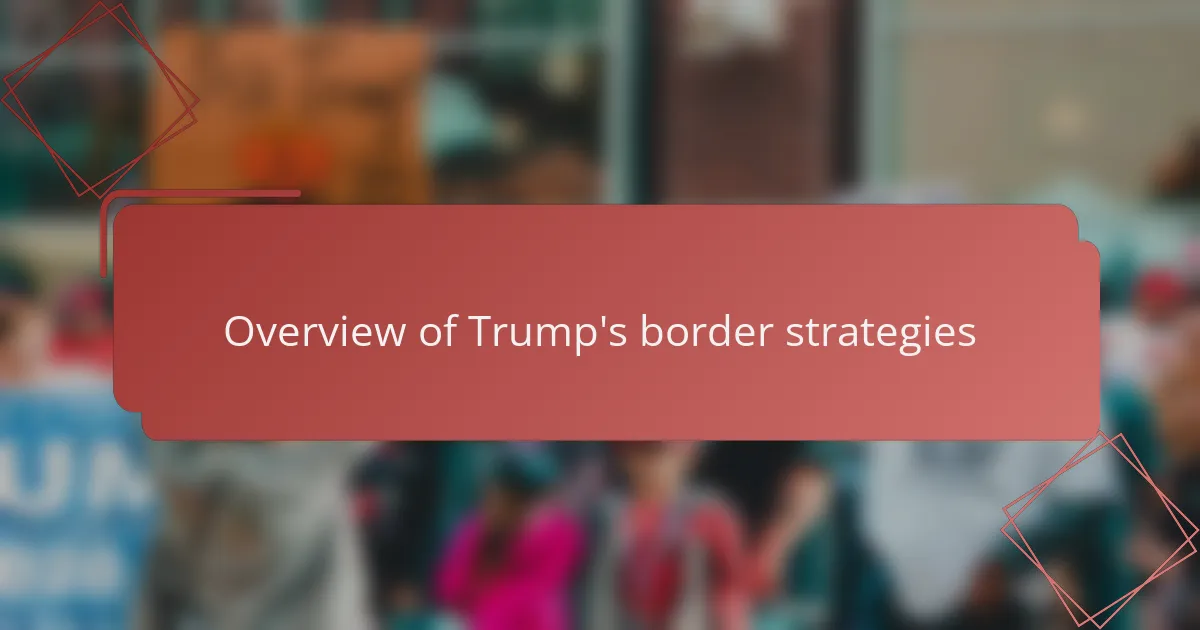
Overview of Trump’s border strategies
Trump’s border strategies were a whirlwind of bold moves and controversial rhetoric. From building extensive physical barriers to enforcing strict immigration policies, it felt like the administration was fixated on creating an impermeable wall—both literally and figuratively. I often wondered if those dramatic gestures were more about political theater than practical solutions.
One tactic that stood out to me was the zero-tolerance policy, which led to family separations at the border. Watching the media coverage stirred a mix of disbelief and frustration. Did the administration fully grasp the human cost behind these policies, or was this another strategic play to energize a specific voter base?
Then there was the use of immigration as a bargaining chip, like restricting asylum claims or deploying troops to the border. It seemed less about managing migration and more about sending a message. In my experience, these moves created a charged atmosphere ripe for satire, perfectly capturing the tension between policy and politics.
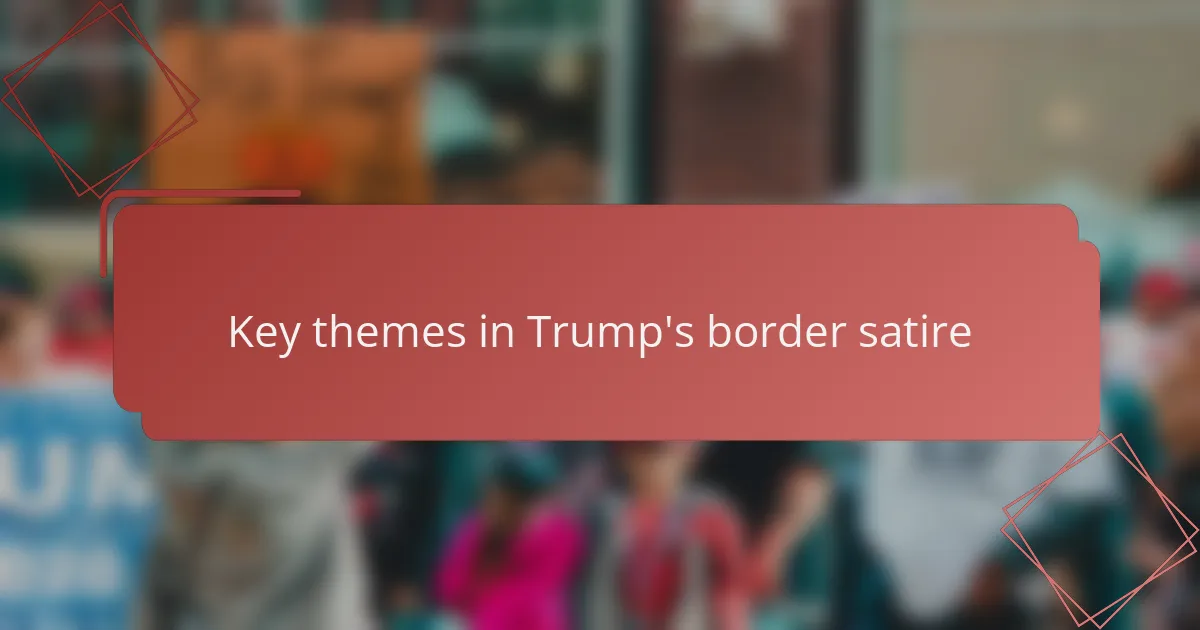
Key themes in Trump’s border satire
Under the heading “Key themes in Trump’s border satire,” I found that the sharp exaggeration of border wall imagery often stood out. It’s as if satirists wanted us to not just see the wall, but feel the absurdity of its scale and symbolism. I remember watching a sketch where the wall kept stretching endlessly, which made me reflect on how this physical barrier was used as a metaphor for isolation and division, something quite emotionally charged in political commentary.
The satire frequently highlighted themes like immigration fears, nationalism, and the performative nature of border policies. These themes aren’t just about politics; they tap into deeper anxieties and identities. Here are some recurring motifs I noticed:
- The border wall as both a physical and psychological barrier
- Hyperbolic portrayals of immigration enforcement agents
- The contrast between reality and political rhetoric
- Use of irony to expose contradictions in policy claims
- The spectacle of slogans and media staging
- Satirical representations of border towns’ daily life impacts
Each of these themes felt like a small lens revealing broader truths, making the satire resonate beyond mere humor.
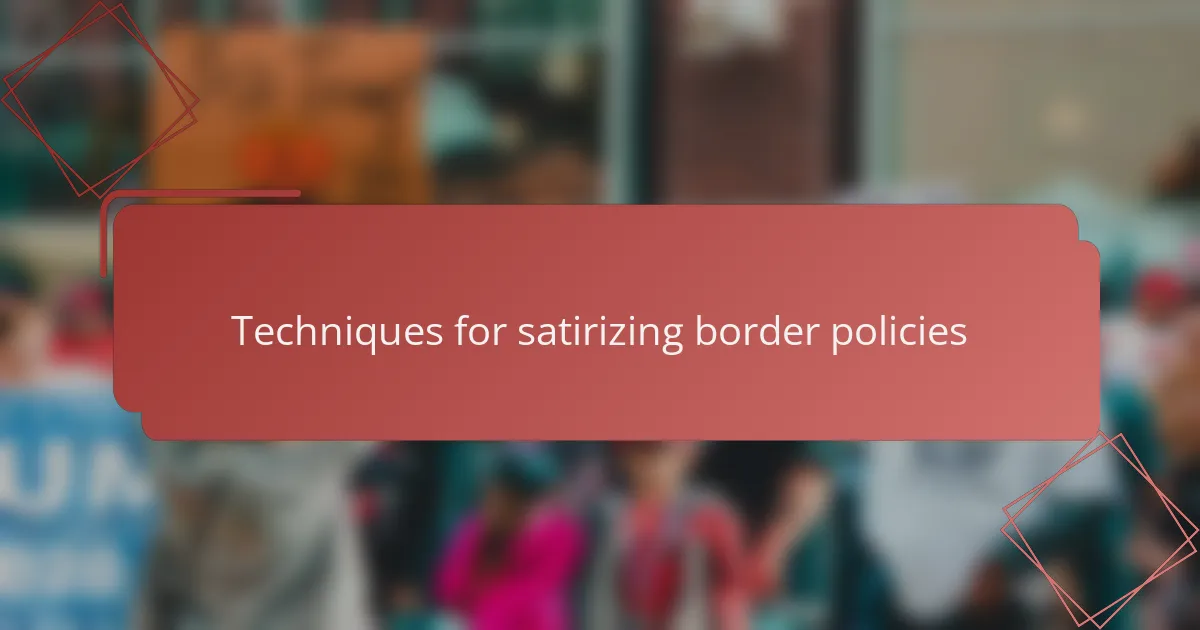
Techniques for satirizing border policies
Techniques for satirizing border policies often rely on exaggeration and irony to expose contradictions and absurdities. From my experience, highlighting the extreme rhetoric or dramatizing the physical barriers creates a humorous but thought-provoking effect. I found that using metaphorical language, like comparing border walls to “invisible fences of paranoia,” helps engage readers while emphasizing the emotional undercurrents behind policy debates.
| Satirical Technique | Example from Trump’s Border Policies |
|---|---|
| Exaggeration | Overstating the Wall’s impact as a “magical solution” to complex immigration issues |
| Irony | Mocking tough rhetoric while showing the on-the-ground reality of migrant hardships |
| Metaphor | Portraying the border as a psychological barrier beyond physical structures |
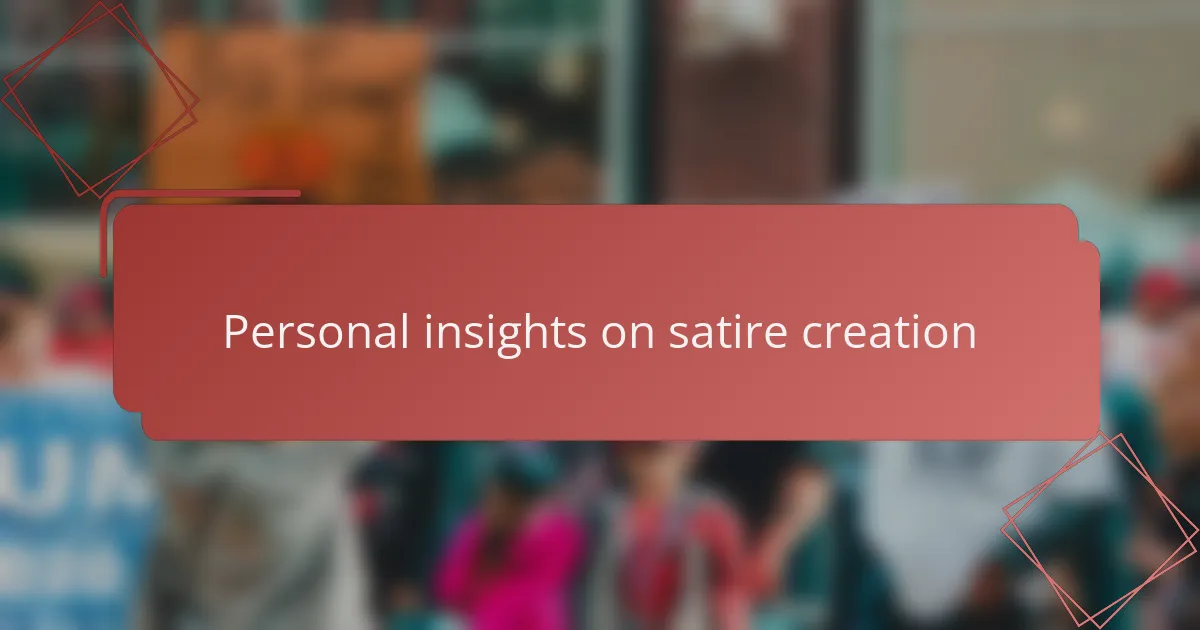
Personal insights on satire creation
Personal insights on satire creation often begin with understanding the delicate balance between humor and critique. I found that navigating Trump’s border strategies through satire demanded both a sharp eye for detail and a deep awareness of the emotional weight behind those policies. It was challenging but also rewarding to turn complex political decisions into accessible, thought-provoking humor that invited reflection rather than just laughter.
| Aspect | My Approach to Satire Creation |
|---|---|
| Focus | Highlighting contradictions and ironies in Trump’s border policies |
| Emotional Tone | Balancing critical commentary with empathetic undertones |
| Audience Engagement | Inviting readers to question rather than just mock |
| Method | Use of exaggerated scenarios based on real events for impact |
| Challenges | Avoiding oversimplification while keeping satire accessible |
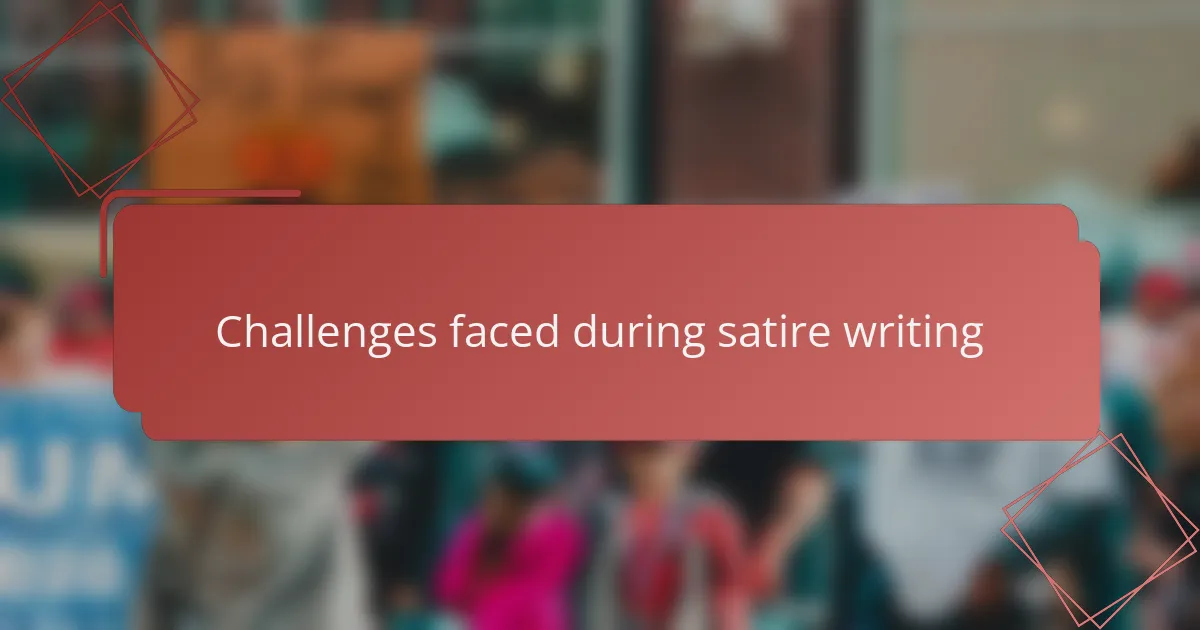
Challenges faced during satire writing
Challenges in satire writing often stem from balancing humor with sensitivity, especially on politically charged topics like Trump’s border policies. I found it tricky to make sharp jokes without alienating readers who might hold strong opinions. At times, I worried that the satire could be misunderstood, which made me constantly rethink my approach to tone and word choice.
Another challenge was staying informed while keeping the content engaging. Politics moves fast, and capturing the nuances of border strategies required careful research—otherwise, the satire could quickly feel outdated or off-base. I remember revising a piece multiple times because new developments shifted public opinion dramatically.
| Challenge | My Experience |
|---|---|
| Balancing Humor and Sensitivity | Struggled with avoiding offense while making sharp critiques; required thoughtful language to keep readers engaged without alienation. |
| Staying Current | Had to constantly update content as border policies evolved rapidly, ensuring satire remained relevant and accurate. |
| Audience Perception | Sometimes concerned that satire might be misinterpreted, prompting multiple revisions to clarify intent. |
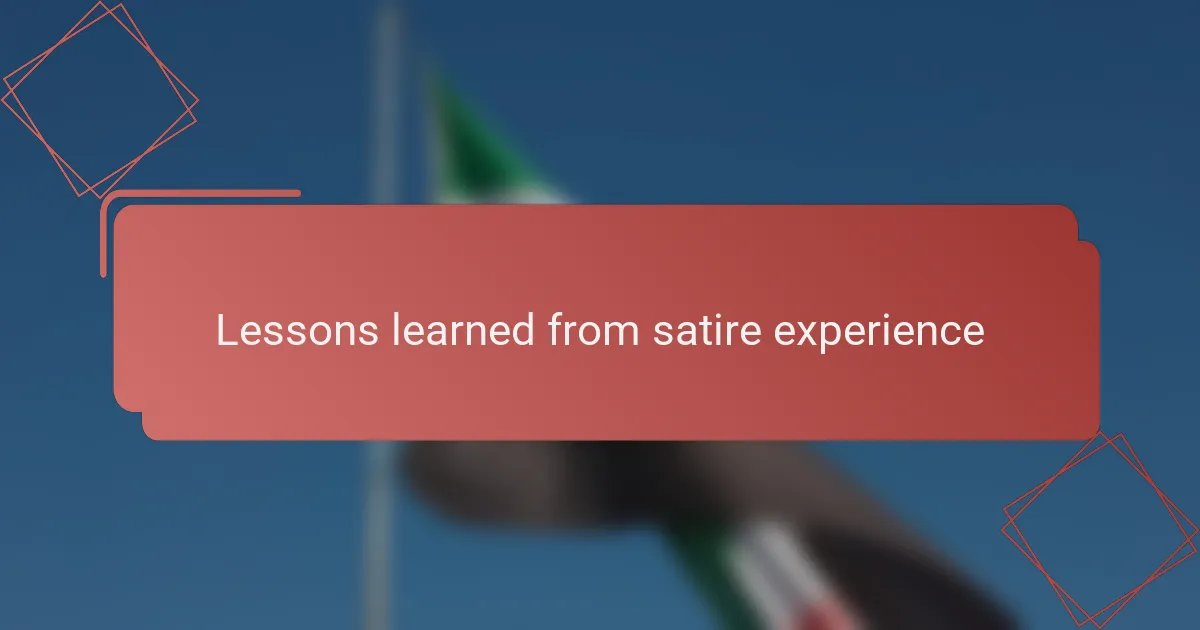
Lessons learned from satire experience
Reflecting on my journey with political satire, one key lesson I learned is how vital it is to respect the fine line between humor and empathy. I often asked myself, “How can I make people laugh without making anyone feel dismissed?” This balance wasn’t always easy to strike, especially given the real human pain behind border policies, but it taught me the power of thoughtful satire that invites reflection rather than ridicule.
Another important takeaway was the need for ongoing research and adaptability. Satire isn’t static; it thrives on relevance. I found myself repeatedly revising my work as new border developments unfolded, wondering if my jokes still held truth or if they needed a fresh perspective. This process deepened my appreciation for satire as a living dialogue with current events, rather than just a momentary punchline.
Lastly, I discovered that effective satire engages the audience in questioning rather than preaching. I realized the best pieces didn’t just highlight absurdities but encouraged readers to probe their own views—sometimes uncomfortably so. Isn’t that what good satire should do? From my experience, this invitation to think critically transforms humor into a meaningful political tool.
